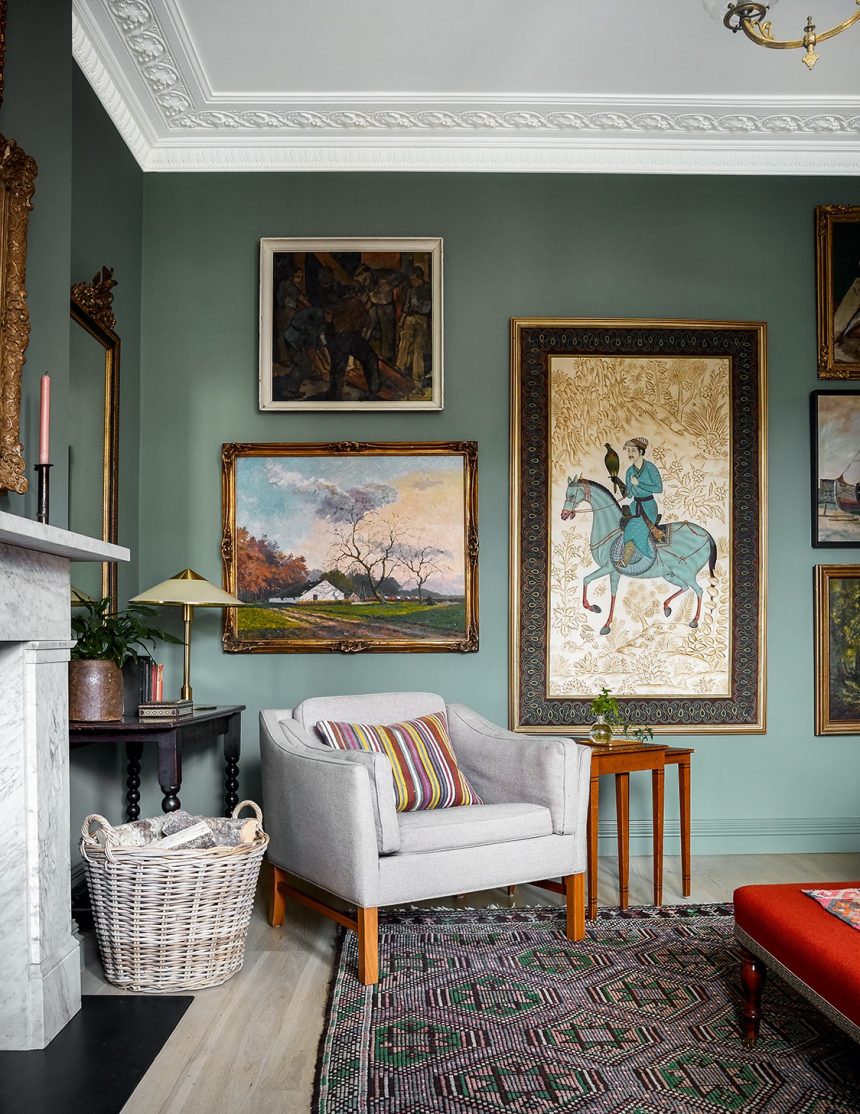Do use colourful, patterned rugs to define spaces
Every seating group needs a rug, and I’ve never liked dining tables on bare floors. Vintage kilims and antique middle-eastern carpets can be very reasonably priced. Make sure you get the size right – for me the rug needs to be big enough so that at least the front legs of a seating group are all on it (and often even larger). And around a dining table be sure to leave enough space for people to pull their chairs back without falling off the edge of the rug.
Don’t leave your windows bare
Every window needs some dressing (well, just about every window, there are exceptions of course…!). Putting up curtains or a blind will instantly change the room. They can be expensive, but they are essential.
Do find interesting light fittings
There are lots of vintage and antique lights for sale in the UK. Do a bit of digging and you’ll find some styles you like. I find it so much more interesting than having a house full of newly made fittings.
Do mix high and low, new and old, smooth and rough
This is so important to me. Every room should have variety within it. Do bring in things that feel rough, whether it’s a rustic milking stool or a souvenir from a trip to a developing country. And place them with things that feel smoother and newer, like a modern metal table lamp. It will add character and soul to your interior.
Don’t stop decorating
So many people start out on their house, realise it’s much more difficult than it looks, then lose steam and never finish the job. Unless you love design, it can sometimes be a chore. But just like any other house chore, you will be so happy when you finish it. So keep going for as long as it takes. And don’t stop changing things up! Interiors aren’t static, so keep buying things. Keep adding and editing and let your home evolve with you over time.
Do prioritise where you spend your budget – some things are worth spending on!
Everything doesn’t have to cost a lot of money, but some things do. Every interior will be different, but there’s usually a point where you say “this is the thing that we need to spend our budget on”. It might be a particularly important piece of furniture, or maybe the rug on the floor or the picture above the fireplace. So hold back some of your budget until you know what that thing is, and then when you find it, go for it!
Don’t focus on “designer” furniture
It doesn’t really matter who designed something. What matters is that it’s good! There’s a lot of focus, particular in American design magazines, around who designed a piece of furniture, textile or light fitting. If you’re an avid collector, then that can be fun, but for most people it makes absolutely no difference who designed a thing. And in fact, having a house full of “designer” collectible furniture can give exactly the wrong impression!







